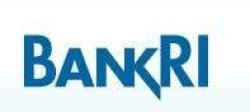It's no surprise why people get so attached to their pets.
They're cute and hilarious, hence why pet videos are so popular on YouTube. They're perfect for providing companionship. They basically become your children, only better, because they're a different species.
What many people don't consider before they decide to adopt that new companion is the true price tag of their pet. The reality is that one pet could cost you more than $10,000 over the course of its lifespan, and much of that will come from hidden costs you may not have thought about.
Whether you're considering getting a pet or you already have one, it's important to be aware of all the potential costs that could come your way.

(Photo: Getty Images)
What it really costs to own a pet
These pet costs will focus on cats and dogs, since those are undoubtedly the most popular animals people keep as pets. If you have a bird, lizard, rabbit or other type of pet, your costs will vary.
How much does a cat cost?
According to PetFinder, cat costs typically range from:
$405 to $2,285 for the first year$340 to $1,825 for every year thereafter
That's for all the basic costs of owning a cat, including food, vet visits, vaccinations, toys, a litter box and litter, a scratching post and a bed. First-year costs are higher since several of those expenses are purchases you won't need to make every year.
How much does a dog cost?
Dogs are similar to cats in terms of costs, with PetFinder reporting the standard range as:
$395 to $2,455 for the first year$326 to $1,967 for every year thereafter
Again, that covers basic costs, including food, vet visits, vaccinations, toys, a collar and leash, a bed or crate, and preventative medications.
Now, the lower ends of these estimates are essentially the bare minimums for keeping your pet reasonably happy and healthy. You may find that you spend more on pet toys and higher-quality foods. After all, you want your loved one to stay healthy for as long as possible. These estimates also don't include some pesky hidden costs.
The hidden costs of pet ownership
We've gone over the basic yearly costs, but in all likelihood, there will be other expenses you incur with your pet.
Let's start with the biggest – medical problems. These are often "out of sight, out of mind" when your pet is in its prime, but pets of all ages can incur hefty medical bills. An illness, an accident or a fight with another animal could all end up costing you quite a bit at the vet.
Pet insurance: How PetFirst is making a name for itself by protecting your pets
Puppuccinos, fur-ternity leave: Millennials' pampered pets are like children
Just how much can medical bills for your pet cost you? Here are the average costs of a few common treatments, courtesy of Trupanion:
Fractured pelvis from being hit by a car: $3,717Chemotherapy for cancer: $5,351Surgery to remove foreign object that pet ate: $2,964Surgery and medications for hip dysplasia: $7,815Medications and blood tests for diabetes: $10,496
In addition, there are other extra costs that pet owners often don't think about, such as:
NEWSLETTERSGet the Managing Your Money newsletter delivered to your inboxWe're sorry, but something went wrongA collection of articles to help you manage your finances like a pro.Please try again soon, or contact Customer Service at 1-800-872-0001.Delivery: FriInvalid email addressThank you! You're almost signed up for Managing Your MoneyKeep an eye out for an email to confirm your newsletter registration.More newsletters

Extra rental costs: For renters, your landlord could want a pet deposit, and some places even charge pet rent.Petsitters: Going on a trip? Petsitters can cost between $15 and $40 per day, making a two-week trip from $210 to $560 more expensive.Flying with a pet: If you're moving or you just want to take your pet with you on a vacation, most airlines charge a minimum of $100 each way to travel with your pet.Grooming: Some pets won't need any grooming other than simple things you can do on your own, but for dogs or cats that need it, the typical cost is anywhere from $30 to $100.How to budget for pet costs
Avoiding pet debt is just like staying out of any other type of debt. You need to anticipate the expenses you could have and start preparing for them ahead of time instead of waiting until you're under the gun.
Here's how to do that:
1. Open your pet fund.
The smartest way to do this is to open a new bank account. Then there's separation between your pet fund and the rest of your money, which is a good reminder that the pet fund is off-limits for everything but pet-related expenses.
Before you open your pet fund, check out the best bank accounts to find one that has a high interest rate and no fees. Savings accounts and money market accounts are both smart choices because they can earn you more interest.
2. Calculate how much you need to save.
Estimate the larger expenses your pet could have, and then break down how much you need to save per month to be ready. For example:
If you plan to take a two-week vacation at the end of each year and a petsitter will cost you $360, then you need to save $30 per month.If your pet just turned four years old and you want to have $5,000 saved for any potential medical bills by the time it's eight, then you need to save $104.17 per month.
3. Set aside a fixed amount every month.
Once you know how much you need to save, you can see if that works within your budget. If not, you'll need to decide whether you can get by with saving less or if you should cut spending in another area.
Make sure you're consistent in depositing money into your pet fund every month and avoid the temptation to skip a month here and there. You'll be happy you did if you need that money in the future.
Should you get pet insurance?
One popular way to deal with vet bills and other medical expenses for your animal is pet insurance. Opinions are mixed on whether pet insurance is worthwhile, but if you can trust yourself to save money for a pet fund consistently, then you're probably better off doing that instead.
Pet insurance works similarly to health insurance in that you pay premiums every month, and then pet insurance helps cover the cost of your pet's medical treatments. The cost of pet insurance varies depending on your pet and what the plan covers, as you can get plans for health problems, accidents, or both. The typical price range is:
$10 to $35 per month for cats$20 to $70 per month for dogs
The problem with pet insurance is that on average, people pay more in premiums than their pet's plan pays out for treatments. You'd be better off saving money on your own for your pet's expenses, as described in the section above, instead of paying premiums every month.
What to do about emergency pet costs
It's always good to be prepared for the worst-case scenario. With a pet, that means having a plan in case it needs a costly treatment that you can't pay for out-of-pocket.
This is a situation many pet owners find themselves in, and sadly, it can even lead to what's known as economic euthanasia, where people need to put down their beloved pets because they can't afford treatment costs.
That's incredibly difficult and something no pet, or its owner, should have to go through. If you find yourself unable to afford your pet's bills, here are a few options to look at:
CareCredit: CareCredit is a line of credit for financing health care costs, and it's also an option at some veterinary clinics. It offers deferred interest plans where you can pay zero interest if you pay off the entire balance within a promotional period (here's more about deferred interest plans and why it's crucial that you pay off your full balance during that promo period).Nonprofit clinics: Many cities have low-cost or nonprofit veterinary clinics that offer services to pet owners in need at a discounted rate.A payment plan with the vet: Depending on your vet, you may be able to negotiate a plan where you pay off your bill in installments instead of all at once.A 0 percent APR credit card: If you have a good to excellent credit score, there are plenty of great 0 percent intro APR cards that offer intro periods of well over a year.A personal loan: While you'll need to pay interest on what you borrow, the best personal loan lenders offer low interest rates along with loan terms and monthly payment amounts to fit your needs.Giving your pet the life it deserves
People often get pets without putting much thought into the costs involved, but it's important to know what expenses you could run into.
After all, your pet is a part of the family, and you want it to have the best quality of life possible. When you're aware of how much pets really cost, you can better prepare for the future.
The Motley Fool has a disclosure policy.
The Motley Fool is a USA TODAY content partner offering financial news, analysis and commentary designed to help people take control of their financial lives. Its content is produced independently of USA TODAY.
Offer from the Motley Fool: The $16,728 Social Security bonus most retirees completely overlook
If you're like most Americans, you're a few years (or more) behind on your retirement savings. But a handful of little-known "Social Security secrets" could help ensure a boost in your retirement income. For example: one easy trick could pay you as much as $16,728 more... each year! Once you learn how to maximize your Social Security benefits, we think you could retire confidently with the peace of mind we're all after. Simply click here to discover how to learn more about these strategies.
 Central Federal Co. (NASDAQ:CFBK) Director David L. Royer bought 5,000 shares of the stock in a transaction on Friday, March 8th. The stock was acquired at an average price of $13.42 per share, with a total value of $67,100.00. Following the completion of the acquisition, the director now owns 6,650 shares of the company’s stock, valued at approximately $89,243. The acquisition was disclosed in a document filed with the SEC, which can be accessed through this hyperlink.
Central Federal Co. (NASDAQ:CFBK) Director David L. Royer bought 5,000 shares of the stock in a transaction on Friday, March 8th. The stock was acquired at an average price of $13.42 per share, with a total value of $67,100.00. Following the completion of the acquisition, the director now owns 6,650 shares of the company’s stock, valued at approximately $89,243. The acquisition was disclosed in a document filed with the SEC, which can be accessed through this hyperlink. 





 Extra rental costs: For renters, your landlord could want a pet deposit, and some places even charge pet rent.Petsitters: Going on a trip? Petsitters can cost between $15 and $40 per day, making a two-week trip from $210 to $560 more expensive.Flying with a pet: If you're moving or you just want to take your pet with you on a vacation, most airlines charge a minimum of $100 each way to travel with your pet.Grooming: Some pets won't need any grooming other than simple things you can do on your own, but for dogs or cats that need it, the typical cost is anywhere from $30 to $100.How to budget for pet costs
Extra rental costs: For renters, your landlord could want a pet deposit, and some places even charge pet rent.Petsitters: Going on a trip? Petsitters can cost between $15 and $40 per day, making a two-week trip from $210 to $560 more expensive.Flying with a pet: If you're moving or you just want to take your pet with you on a vacation, most airlines charge a minimum of $100 each way to travel with your pet.Grooming: Some pets won't need any grooming other than simple things you can do on your own, but for dogs or cats that need it, the typical cost is anywhere from $30 to $100.How to budget for pet costs

 ETRADE Capital Management LLC acquired a new position in shares of Sealed Air Corp (NYSE:SEE) in the 4th quarter, HoldingsChannel.com reports. The firm acquired 18,162 shares of the industrial products company’s stock, valued at approximately $633,000.
ETRADE Capital Management LLC acquired a new position in shares of Sealed Air Corp (NYSE:SEE) in the 4th quarter, HoldingsChannel.com reports. The firm acquired 18,162 shares of the industrial products company’s stock, valued at approximately $633,000. 





 Sterling Bancorp, Inc. is a unitary thrift holding company. Its wholly owned subsidiary, Sterling Bank and Trust, F.S.B., has primary branch operations in San Francisco and Los Angeles, California and New York City, and a loan production office in Seattle, Washington. Sterling offers a broad range of loan products to the residential and commercial markets, as well as retail and business banking services. Sterling also has an operations center and a branch in Southfield, Michigan. Sterling was named as the top performing community bank in the United States with total assets between $1 billion and $10 billion in 2017 by SNL/S&P Global Market Intelligence.
Sterling Bancorp, Inc. is a unitary thrift holding company. Its wholly owned subsidiary, Sterling Bank and Trust, F.S.B., has primary branch operations in San Francisco and Los Angeles, California and New York City, and a loan production office in Seattle, Washington. Sterling offers a broad range of loan products to the residential and commercial markets, as well as retail and business banking services. Sterling also has an operations center and a branch in Southfield, Michigan. Sterling was named as the top performing community bank in the United States with total assets between $1 billion and $10 billion in 2017 by SNL/S&P Global Market Intelligence. Brookline Bancorp, Inc. operates as the holding company for Brookline Bank, Bank Rhode Island, First Ipswich Bank, and Brookline Securities Corp that provide commercial, business, and retail banking services to corporate, municipal, and retail customers in the United States. Its deposit products include non-interest-bearing demand checking accounts, NOW accounts, savings accounts, and money market accounts. The company's loan portfolio comprises first mortgage loans secured by commercial, multi-family, and residential real estate properties; loans to business entities comprising commercial lines of credit; loans to condominium associations; loans and leases used to finance equipment used by small businesses; financing for construction and development projects; and home equity and other consumer loans. It also provides cash management, investment advisory, and online banking services, as well as invests in debt and equity securities. As of December 31, 2017, the Company operated 51 full-service banking offices in greater Boston, the north shore of Massachusetts, and Rhode Island. Brookline Bancorp, Inc. was founded in 1871 and is headquartered in Boston, Massachusetts.
Brookline Bancorp, Inc. operates as the holding company for Brookline Bank, Bank Rhode Island, First Ipswich Bank, and Brookline Securities Corp that provide commercial, business, and retail banking services to corporate, municipal, and retail customers in the United States. Its deposit products include non-interest-bearing demand checking accounts, NOW accounts, savings accounts, and money market accounts. The company's loan portfolio comprises first mortgage loans secured by commercial, multi-family, and residential real estate properties; loans to business entities comprising commercial lines of credit; loans to condominium associations; loans and leases used to finance equipment used by small businesses; financing for construction and development projects; and home equity and other consumer loans. It also provides cash management, investment advisory, and online banking services, as well as invests in debt and equity securities. As of December 31, 2017, the Company operated 51 full-service banking offices in greater Boston, the north shore of Massachusetts, and Rhode Island. Brookline Bancorp, Inc. was founded in 1871 and is headquartered in Boston, Massachusetts.